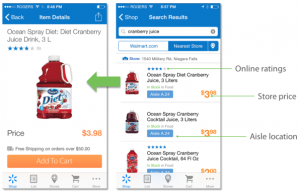Omnichannel Today
Retailers are starting to thrive again thanks to eCommerce. Which retailers will survive?
The Rise and Demise of Ecommerce
Since the end of the 1990s, ecommerce has gone from minor curiosity to full-blown economic powerhouse. Amazon started out selling books by mail and then took over the e-book market with its Kindle devices and AZW e-book format. A few years ago, most people still thought of Amazon as a book seller, and they probably spent as much time or more shopping for books at Barnes and Noble as they did browsing online retailers. Today, most people know that Amazon is the biggest online retailer and that it sells everything from electronics and kitchen gadgets to auto parts.
How To Connect With Website Visitors in an Authentic Way
At the core of content marketing – and much of the rest of modern web marketing tactics – sits a single concept: connecting with visitors. It’s all too common for companies to lose sight of this core issue, pumping out meaningless, worthless, inauthentic content to fill space on their blogs, YouTube channels, and social media accounts. Or, even worse, to make genuine attempts to connect and nonetheless fall short due to a perceived lack of authenticity.
3 Things Entrepreneurs Can Learn From Successful Ecommerce Brands
Whether you run a brick-and-mortar business or are thinking of starting a digital-based company, there is much to learn from the success of large ecommerce firms around the world. No matter what the industry, online businesses have shaken up the way people buy and sell, communicate, share and learn in all corners of the globe.
10 Tech Tasks Small Businesses Should Outsource
Outsourcing can be a great way for small businesses and startups to take care of tedious tasks while also boosting productivity and saving money. By outsourcing technology-related necessities, small business owners and employees can focus on more important responsibilities, like sales, customer service and more, without hiring more in-house employees.
Other stuff we read this week:
What 10 Travel Brand CEOs Said About Personalization in 2015
All Amazon Wants for Christmas is its Own Trucking Fleet.
Winning Over Big Box Retailers.
The Container Store gives (social) power to the people
Why 2016 is a Big Year for Twitter and Nintendo
Check back next time for the latest developments in omnichannel! We’ll bring you news, facts, opinions, and infographics that will help you gain a broad perspective of the industry. Drop in, stick around, and subscribe to our newsletter – and who knows? You just might learn something.




